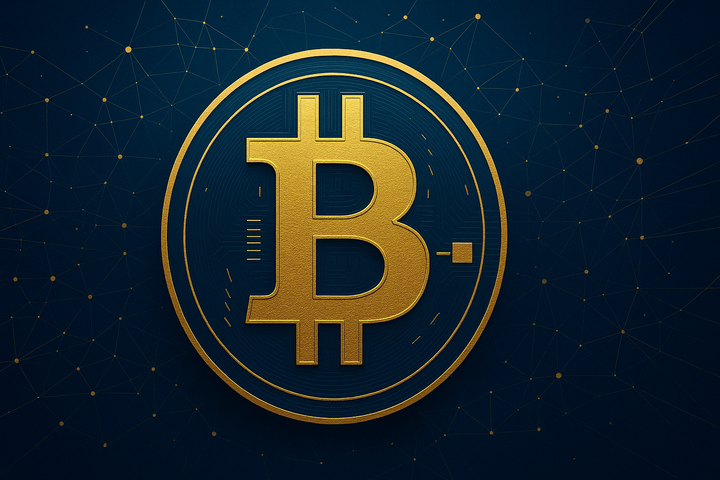Institutional Holding, ETF Risks, and Impending Bitcoin Supply Shock
The August 08, 2025 episode of the Green Candle Podcast features Maurizio Pedrazzoli Grazioli from the Mr. M. podcast explaining why institutional holding, macroeconomic catalysts, and shrinking liquidity may drive Bitcoin to $200,000 by year-end.

- My 'briefing notes' summarize the content of podcast episodes; they do not reflect my own views.
- They contain (1) a summary of podcast content, (2) potential information gaps, and (3) some speculative views on wider Bitcoin implications.
- Pay attention to broadcast dates (I often summarize older episodes)
- Some episodes I summarize may be sponsored: don't trust, verify, if the information you are looking for is to be used for decision-making.
Summary
The August 08, 2025 episode of the Green Candle Podcast features Maurizio Pedrazzoli Grazioli from the Mr. M. podcast explaining why institutional holding, macroeconomic catalysts, and shrinking liquidity may drive Bitcoin to $200,000 by year-end. He outlines how ETFs accelerate adoption while concentrating custodial risk in Coinbase, creating systemic vulnerabilities. Grazioli warns that declining exchange reserves and sustained corporate accumulation heighten the likelihood of a supply shock within the current cycle.
Take-Home Messages
- Cycle Evolution: Institutional and sovereign accumulation is moderating volatility and could extend the current cycle beyond historical norms.
- Custody Concentration: Heavy ETF reliance on Coinbase creates a single point of failure with systemic market implications.
- Macroeconomic Drivers: Anticipated monetary easing, political changes, and inflation concerns are poised to fuel further demand.
- Liquidity Compression: Falling exchange and OTC reserves combined with aggressive corporate buying may trigger a supply shock.
- Adoption Channels: ETFs expand market access but long-term resilience depends on diversifying custody and promoting self-custody.
Overview
Maurizio Grazioli forecasts that Bitcoin could reach $200,000 by the end of 2025, with momentum potentially carrying into 2026. This would mark a departure from the traditional four-year cycle, driven by institutional and sovereign holders who are less inclined to sell at typical profit-taking levels. He argues that this structural shift from retail-driven trading to long-term holding will dampen volatility and produce milder corrections.
ETFs have become a major force in broadening market access, but Grazioli emphasizes that they centralize custodial risk. Coinbase serves as custodian for the majority of U.S. spot products, meaning a disruption there could impact most ETF investors. While he supports ETFs as a necessary step in scaling adoption, he stresses that they do not replace the security benefits of self-custody.
Macroeconomic policy shifts are another potential catalyst for price growth. Grazioli points to possible U.S. monetary easing and renewed money printing as likely triggers for increased institutional and retail demand. He suggests that state-level Bitcoin purchases, such as Texas’ recent move, add to upward pressure by legitimizing adoption in the public sector.
Declining exchange and OTC reserves are tightening available supply as corporate buyers continue aggressive accumulation. Grazioli highlights firms like MicroStrategy making consistent large-scale purchases, contributing to market illiquidity. He warns that if this trend continues, the imbalance between demand and supply could culminate in a rapid price surge, a supply shock scenario.
Stakeholder Perspectives
- Institutional Investors: Seek Bitcoin exposure for portfolio diversification but may underestimate the systemic risk of concentrated custody.
- Regulators: Concerned about single-custodian vulnerabilities and potential contagion effects in ETF markets.
- State Governments: Explore Bitcoin for reserve diversification and inflation protection while assessing political ramifications.
- Retail Investors: Risk being crowded out by large buyers and often misunderstand Bitcoin’s divisibility and affordability.
- ETF Providers: Aim to capture inflows through mainstream products while managing reputational and operational risks tied to custody.
Implications and Future Outlook
If institutional holding continues to grow, volatility could remain subdued and corrections less severe, altering established price cycle patterns. This may make Bitcoin more attractive to risk-averse investors and policymakers who were previously deterred by its extreme swings. Over time, a sustained base of long-term holders could stabilize markets but also limit liquidity.
Custodial concentration in ETFs presents a clear systemic vulnerability. A major disruption to Coinbase would not only affect ETF investors but could erode confidence in institutional Bitcoin products altogether. Addressing this risk will require both regulatory oversight and market-driven diversification of custodial arrangements.
The convergence of macroeconomic easing, geopolitical shifts, and tightening supply sets the stage for a potential supply shock. In such an environment, even modest increases in demand could result in disproportionate price movements. Stakeholders should anticipate liquidity constraints and prepare for scenarios where rapid appreciation challenges market infrastructure.
Some Key Information Gaps
- How could Coinbase’s role as custodian for most U.S. Bitcoin ETFs be diversified to reduce systemic risk? Concentration of custody in a single entity magnifies operational and regulatory vulnerabilities.
- At what point will declining exchange and OTC reserves trigger a market-wide supply shock? Identifying thresholds would help investors and policymakers anticipate sharp liquidity crunches.
- Which states or countries are most likely to follow Texas in purchasing Bitcoin, and on what timeline? Understanding adoption patterns can inform strategic positioning and policy responses.
- What factors could cause a permanent break from Bitcoin’s traditional four-year market cycle? Recognizing structural shifts is essential for updating forecasting models.
- How concentrated can corporate accumulation become before it destabilizes market liquidity? Establishing limits can guide market safeguards and investor risk management.
Broader Implications for Bitcoin
Evolution of Monetary Power Structures
If long-term institutional and sovereign holding becomes the norm, the leverage of central banks in setting monetary conditions could erode. Bitcoin’s fixed supply model would act as a parallel benchmark to fiat monetary systems, constraining policymakers’ ability to expand money supply without market consequences. Over time, this could prompt a recalibration of global reserve management toward multipolar asset strategies where Bitcoin holds a structural role.
Systemic Risk Regulation in Decentralized Contexts
The custodial concentration issue in ETFs highlights a future regulatory challenge — how to govern systemic financial risks in markets built on decentralized assets but concentrated service providers. Traditional oversight models assume jurisdiction over centralized entities, yet Bitcoin’s global, permissionless nature will force regulators to adapt their frameworks. This evolution could set precedents for managing systemic risk in other decentralized networks and asset classes.
Strategic Competition Between Jurisdictions
As Bitcoin adoption at the state or national level becomes a competitive differentiator for attracting capital, jurisdictions may enter into a “monetary infrastructure race.” Beyond simply holding Bitcoin, they could compete on taxation, settlement speed, and integration with trade systems to attract high-value flows. This competition could reshape global economic alignments and create new hubs of monetary influence outside traditional finance centers.
Market Infrastructure Resilience as a Geopolitical Asset
In an environment where liquidity compression can trigger extreme price volatility, the ability to maintain operational continuity becomes a form of geopolitical leverage. Jurisdictions or corporate entities that can guarantee robust, always-on Bitcoin market access will wield influence over capital allocation during crises. This could redefine the strategic value of financial infrastructure in the same way ports and trade routes historically shaped power.
Integration of Bitcoin into Global Macroeconomic Signaling
If Bitcoin becomes increasingly sensitive to and reflective of global liquidity trends, it could evolve into a real-time macroeconomic signal used by investors and policymakers worldwide. Its open, transparent ledger and high-frequency price data offer a novel indicator of capital flows and risk sentiment. Over the long term, this integration could alter how economic cycles are monitored and responded to at the global governance level.



Comments ()